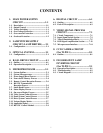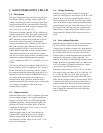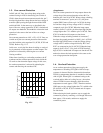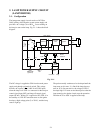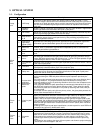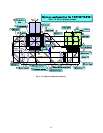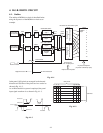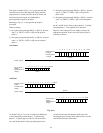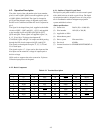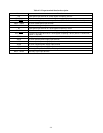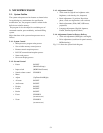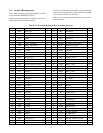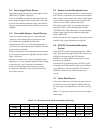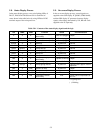
2-1
2. LAMP POWER SUPPLY CIRCUIT
(LAMP DRIVER)
2-1. Configuration
The lamp power supply cicrcuit receives a DC220 to
390V (primary side) from the system power supply and
provides a AC voltage (70 to 100V
AC
at ever turning on
the lamp) to turn on the lamp. Fig. 2-1-1 shows the block
diagram.
The DC voltage is supplied to CB1 from the main power
supply unit through an interlock switch. This voltage
becomes AC input x 2Ö2 (= 340V for AC120V input)
when the lamp is off. CB2 is a connector for the lamp on
control signal input (SCI) and lamp off control signal
output (FLAG). When +5V is applied to SCI (CB2-1) in
the standby on, I122 FET transistor turns on, the igniter
develops a high voltage pulse (5 to 25 kV), and the lamp
starts to light up.
The pulse normally continues to be developed until the
lamp turns on (for max. 3s.). But if the lamp does not
turn on, I121 does not turn on, the voltage of CB2-3
develops high. I121 turns on and develops low after the
lamp turned on, the igniter circuit stops the operation.
Then the AC70 to 100V is applied to the lamp.
Fig. 2-1-1
L1
C1
R1
C2
Power
input
Lamp Driver
Stabilizer Igniter
Commu-
tator
Control
I122
I121
Mains
isolated
100nF
1K
CsRs
CB3
EMC GND
(optional)
CB2-1
SCI
CB2-2
Common Flag
L1
L2
Lamp




